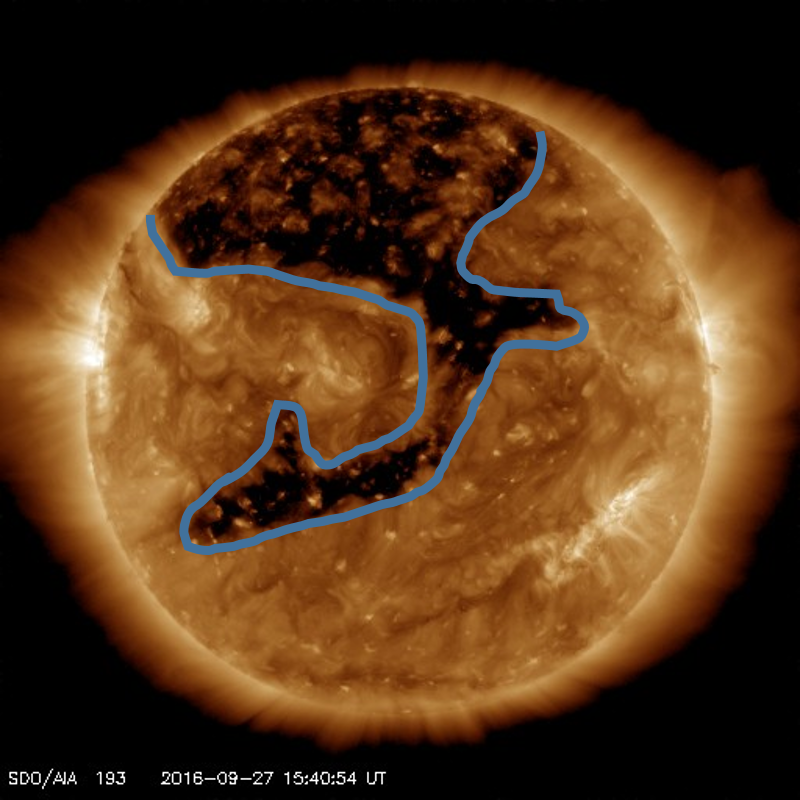Space Weather Alert - 28 September 2016
What Has Happened?
A very large, centrally located coronal hole has rotated around the Sun's surface so that it is now facing the Earth. This means that a stream of fast solar wind is currently hitting the Earth's magnetic field and causing an increase in geomagnetic activity.
On the previous solar rotation (~28 days ago) this coronal hole produced a moderate geomagnetic storm with a peak of STORM G2 and prolonged periods of STORM G1 (see NOAA space weather scales for more details about these storm levels), which allowed aurora sightings across the north of the UK. Since then it has grown in size and now covers more of the equatorial region of the Sun; the geomagnetic field is also already disturbed by a previous coronal hole which has been causing STORM conditions over the last few nights. This means we are anticipating stormy conditions again, with a chance for some isolated STORM G3 periods.
The high speed solar wind stream is expected to cause geomagnetic disturbances for around 24-48 hours, peaking on 29th September before subsiding.
Assuming clear dark skies, there is an increased chance of seeing the aurora overnight Wednesday and Thursday, particularly for those in Scotland, northern England and Northern Ireland.
Sign-up to receive Geomagnetic Disturbance Alert emails.
Follow us on Twitter:
Follow @BGSauroraAlert for more occasional aurora alerts.
Follow @BGSspaceWeather for daily space weather forecasts.
Glossary
- BGS
- The British Geological Survey is one of the Natural Environment Research Council's Research Centres.
- Coronal Hole
- A region in the Sun’s outer atmosphere (corona) where hot material can flow unrestrained by its magnetic fields out into space.
- High Speed Stream
- A fast moving stream of solar wind, responsible for magnetic storms.
- Magnetogram
- The variation, minute by minute, of the strength and direction of the Earth’s magnetic field. Measured in units of nano-Tesla (for the strength of the field) or in degrees (direction of the field).
Solar Wind- The ever-present expansion of the Sun’s hot outer atmosphere into the solar system, which carries space weather within it.


